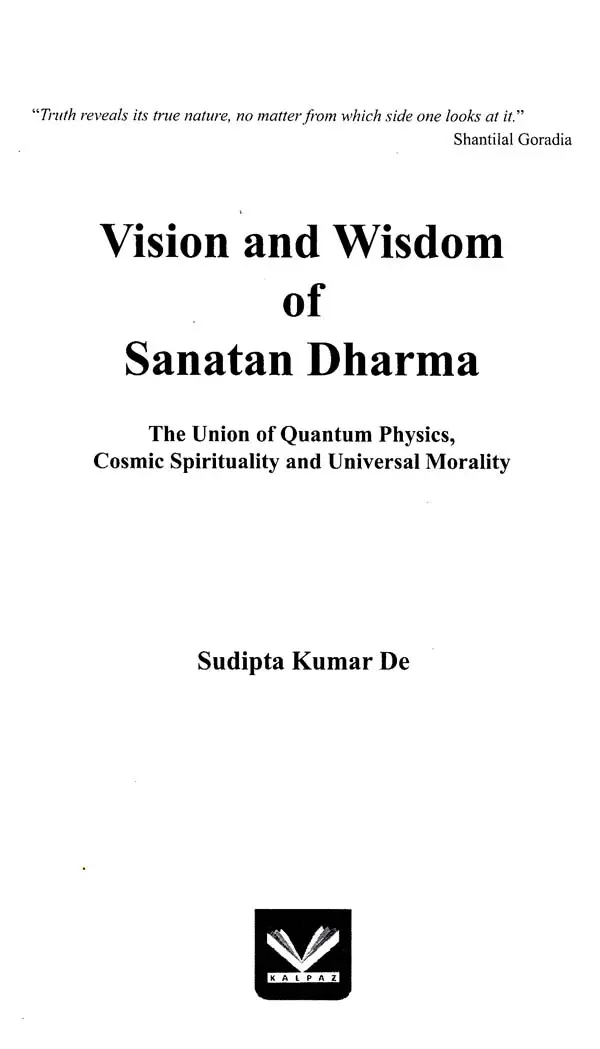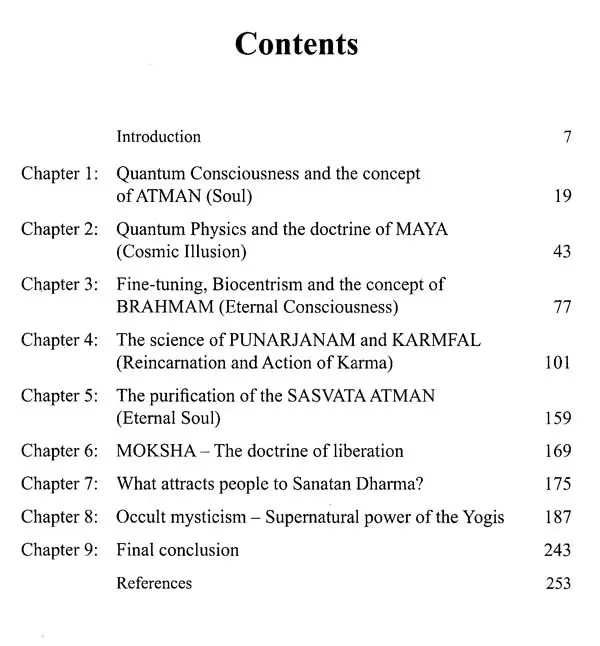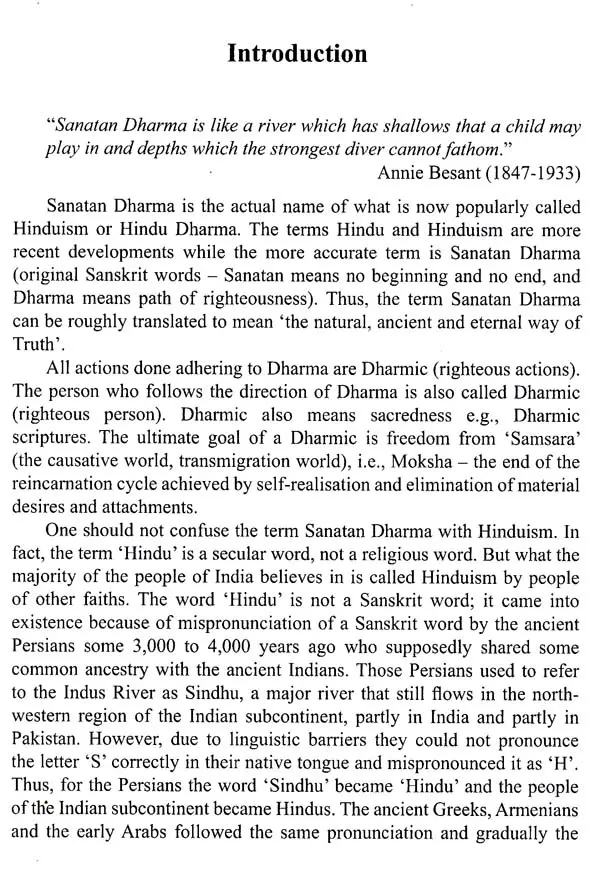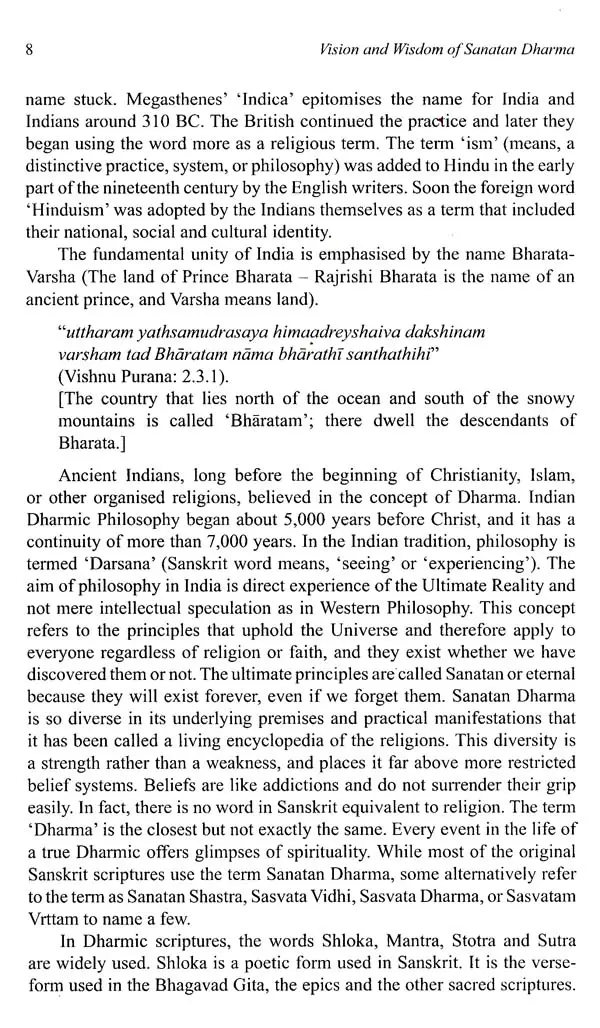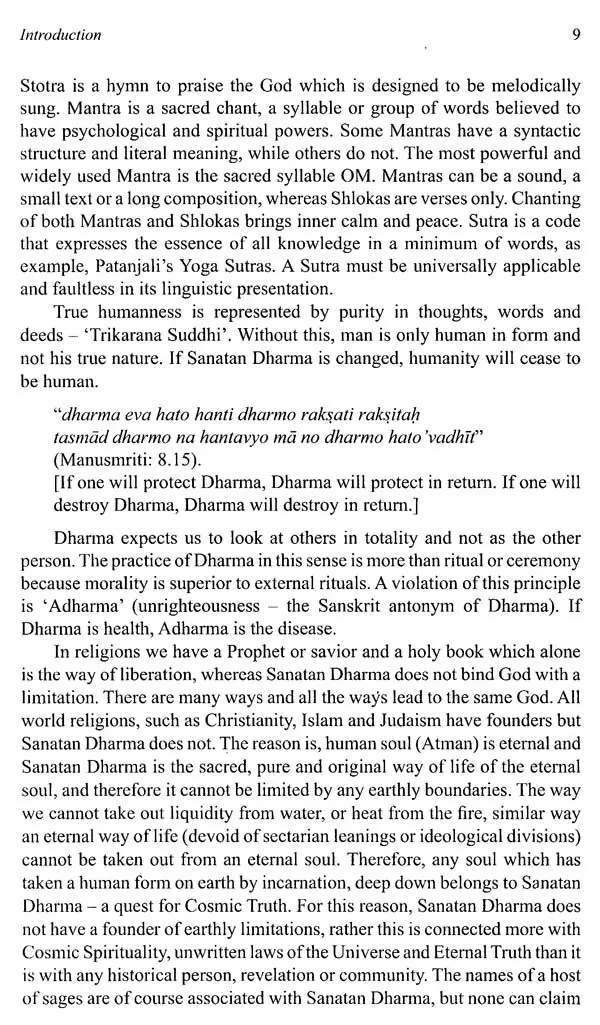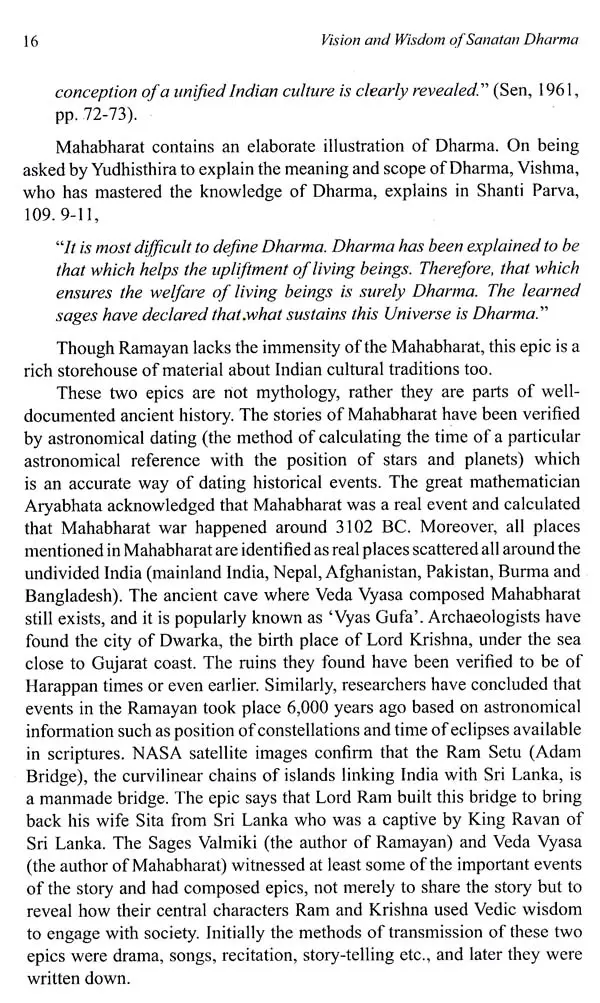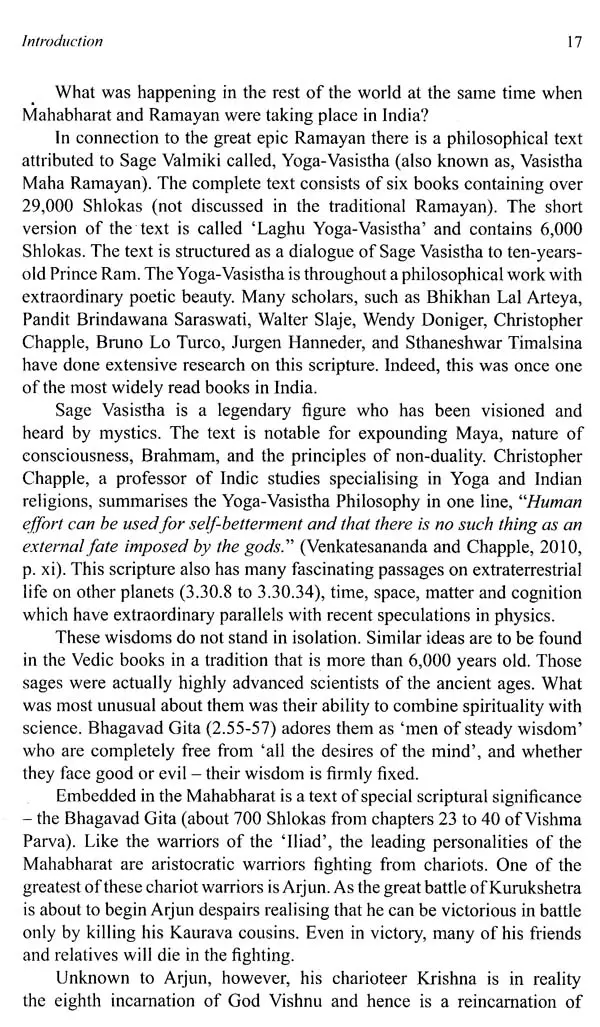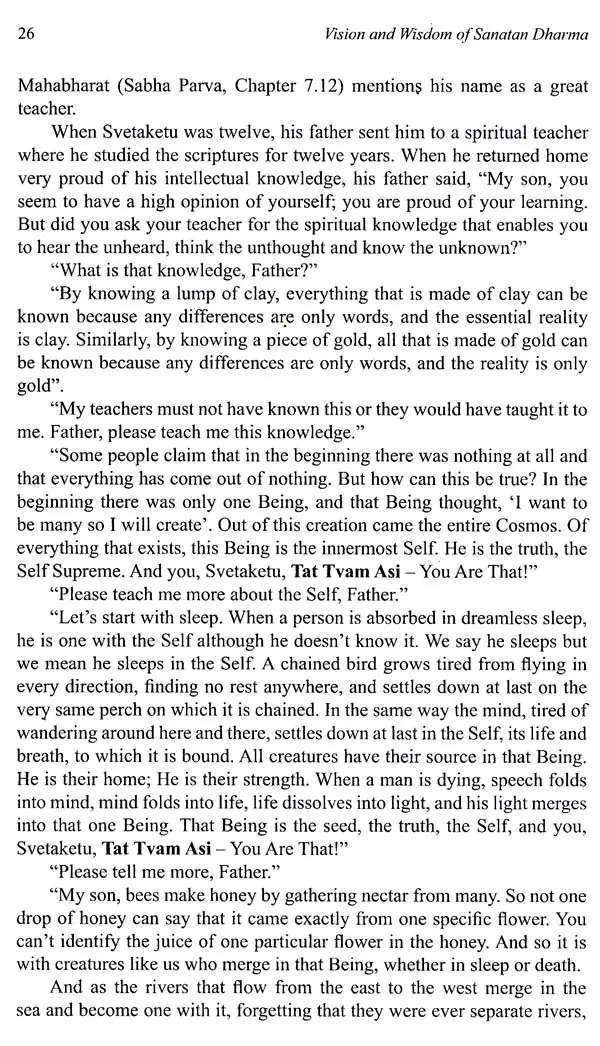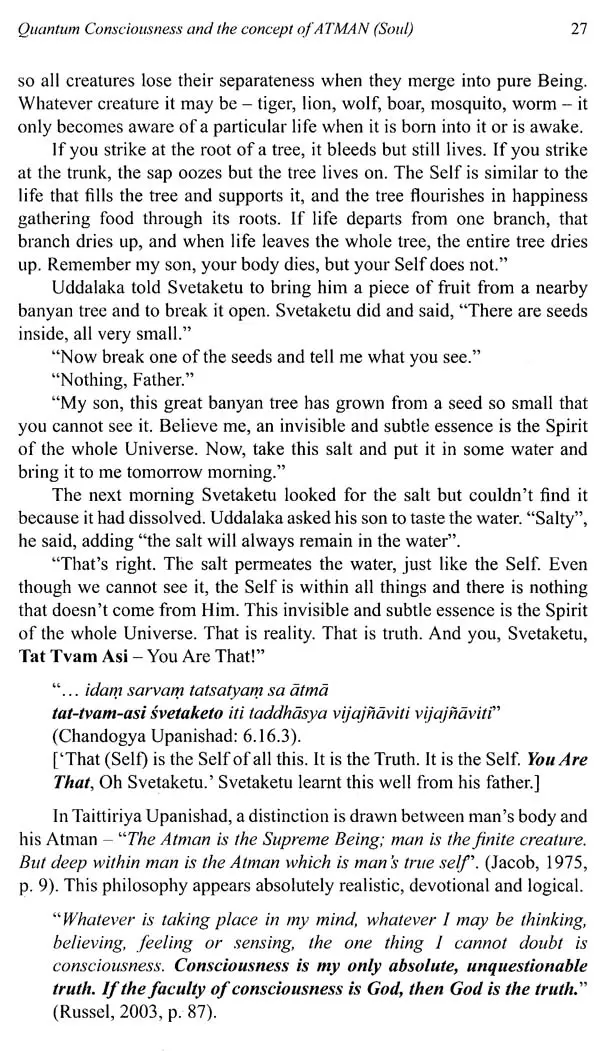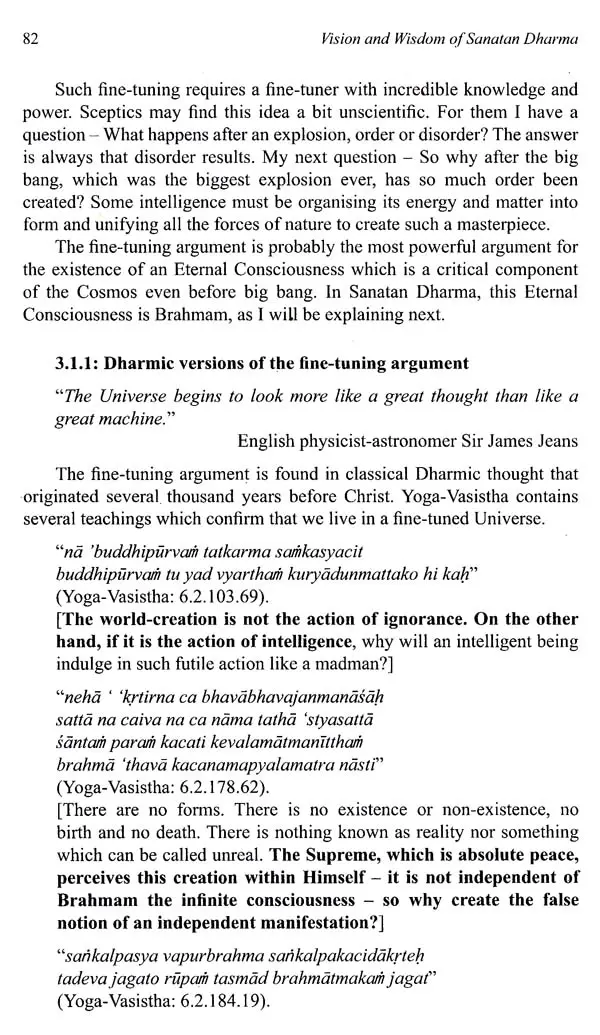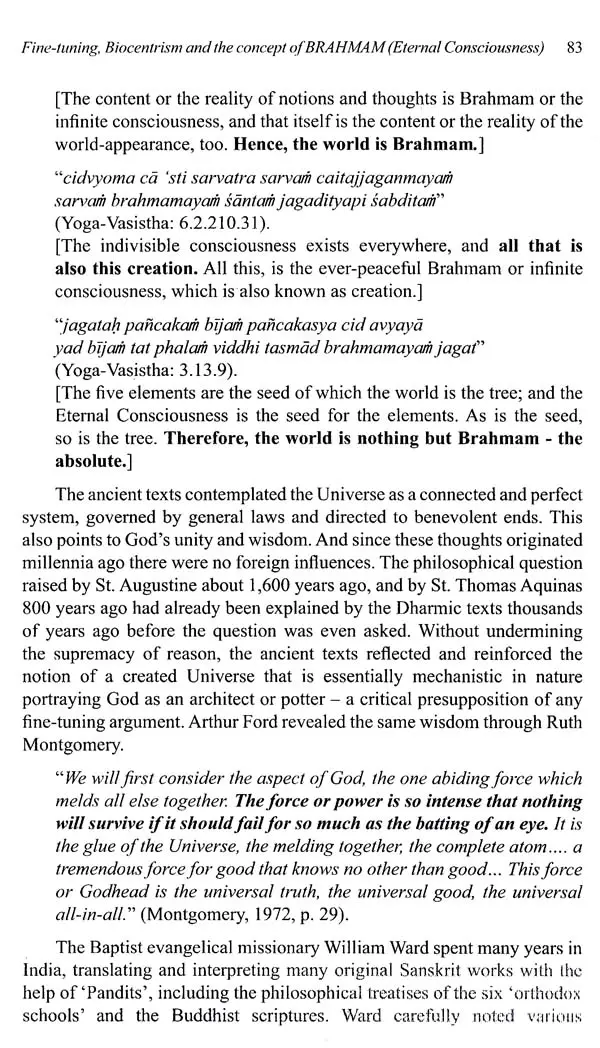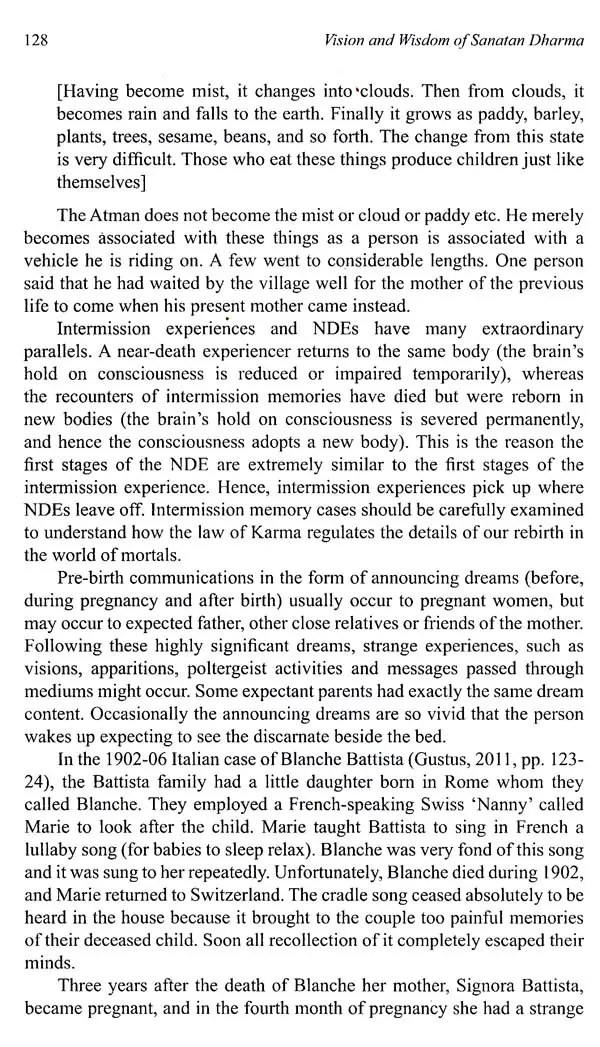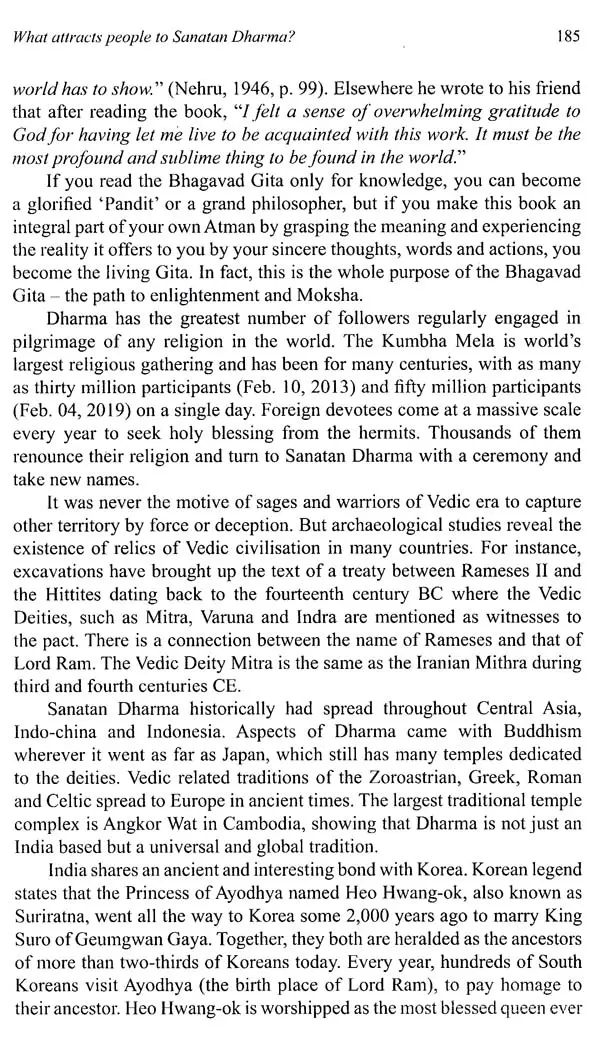
Vision and Wisdom of Sanatan Dharma- The Union of Quantum Physics, Cosmic Spirituality and Universal Morality
Book Specification
| Item Code: | UBA987 |
| Author: | Sudipta Kumar De |
| Publisher: | Kalpaz Publications |
| Language: | English |
| Edition: | 2022 |
| ISBN: | 9789353249564 |
| Pages: | 257 |
| Cover: | PAPERBACK |
| Other Details | 8.50 X 5.50 inch |
| Weight | 300 gm |
Book Description
Dharma has withstood the test of time for the last six or seven millennia. This is like the lofty Himalayas that stand firm, silent and serene, or the mighty River Ganga which continues to flow unhindered. The Sanatana Dharma continues to give spiritual strength and sustenance to everyone. This stands firm upon a philosophical foundation. strengthened by its language and literature, dance and drama, art and sculpture which is sustained throughout the ages by its Vedic practices. The ancient Vedic voice echoes, "Lead us from the unreal to the real. Lead us from darkness to light. Lead us from death to immortality. Let there be Peace Peace Peace". This is a voice which continues to excite the hearts and inspire the minds of millions of men and women. Sanatana Dharma is equipped to confront the powerful forces of modern science and technology, which have no doubt brought progress but have, at the same time, dehumanized humankind.
Sanatana Dharma is not of the past. This is in our soul. This is the future of the world.
All actions done adhering to Dharma are Dharmic (righteous actions). The person who follows the direction of Dharma is also called Dharmic (righteous person). Dharmic also means sacredness eg, Dharmic scriptures. The ultimate goal of a Dharmic is freedom from 'Samsara' (the causative world, transmigration world), i.e., Moksha - the end of the reincarnation cycle achieved by self-realisation and elimination of material desires and attachments.
One should not confuse the term Sanatan Dharma with Hinduism. In fact, the term 'Hindu' is a secular word, not a religious word. But what the majority of the people of India believes in is called Hinduism by people of other faiths. The word 'Hindu' is not a Sanskrit word, it came into existence because of mispronunciation of a Sanskrit word by the ancient Persians some 3,000 to 4,000 years ago who supposedly shared some common ancestry with the ancient Indians. Those Persians used to refer to the Indus River as Sindhu, a major river that still flows in the north- western region of the Indian subcontinent, partly in India and partly in Pakistan. However, due to linguistic barriers they could not pronounce the letter 'S' correctly in their native tongue and mispronounced it as 'H'. Thus, for the Persians the word 'Sindhu' became Hindu' and the people of the Indian subcontinent became Hindus. The ancient Greeks, Armenians and the early Arabs followed the same pronunciation and gradually the name stuck. Megasthenes Indica' epitomises the name for India and Indians around 310 BC. The British continued the practice and later they began using the word more as a religious term. The term "ism' (means, a distinctive practice, system, or philosophy) was added to Hindu in the early part of the nineteenth century by the English writers. Soon the foreign word Hinduism' was adopted by the Indians themselves as a term that included their national, social and cultural identity.
The fundamental unity of India is emphasised by the name Bharata- Varsha (The land of Prince Bharata - Rajrishi Bharata is the name of an ancient prince, and Varsha means land).
"utharam yathsamudrasaya himaadreyshaiva dakshinam varsham tad Bharatam nāma bharathi santhathihi"
(Vishnu Purana: 23.1). The country that lies north of the ocean and south of the snowy mountains is called 'Bharatam'; there dwell the descendants of Bharata.]
Ancient Indians, long before the beginning of Christianity, Islam, or other organized religions, believed in the concept of Dharma. Indian Dharmic Philosophy began about 5,000 years before Christ, and it has a of more than 7,000 years. In the Indian tradition, philosophy is termed 'Darsana (Sanskrit word means, 'seeing' or 'experiencing'). The aim of philosophy in India is direct experience of the Ultimate Reality and not mere intellectual speculation as in Western Philosophy. This concept refers to the principles that uphold the Universe and therefore apply to everyone regardless of religion or faith, and they exist whether we have discovered them or not. The ultimate principles are called Sanatan or eternal because they will exist forever, even if we forget them. Sanatan Dharma is so diverse in its underlying premises and practical manifestations that it has been called a living encyclopedia of the religions. This diversity is a strength rather than a weakness, and places it far above more restricted belief systems. Beliefs are like addictions and do not surrender their grip easily. In fact, there is no word in Sanskrit equivalent to religion. The term "Dharma" is the closest but not exactly the same. Every event in the life of a true Dharmic offers glimpses of spirituality. While most of the original Sanskrit scriptures use the term Sanatan Dharma, some alternatively refer to the term as Sanatan Shastra, Sasvata Vidhi, Sasvata Dharma, or Sasvatam Vrttam to name a few.
In Dharmic scriptures, the words Shloka, Mantra, Stotra and Sutra are widely used. Shloka is a poetic form used in Sanskrit. It is the verse- form used in the Bhagavad Gita, the epics and the other sacred scriptures.
**Contents and Sample Pages**
